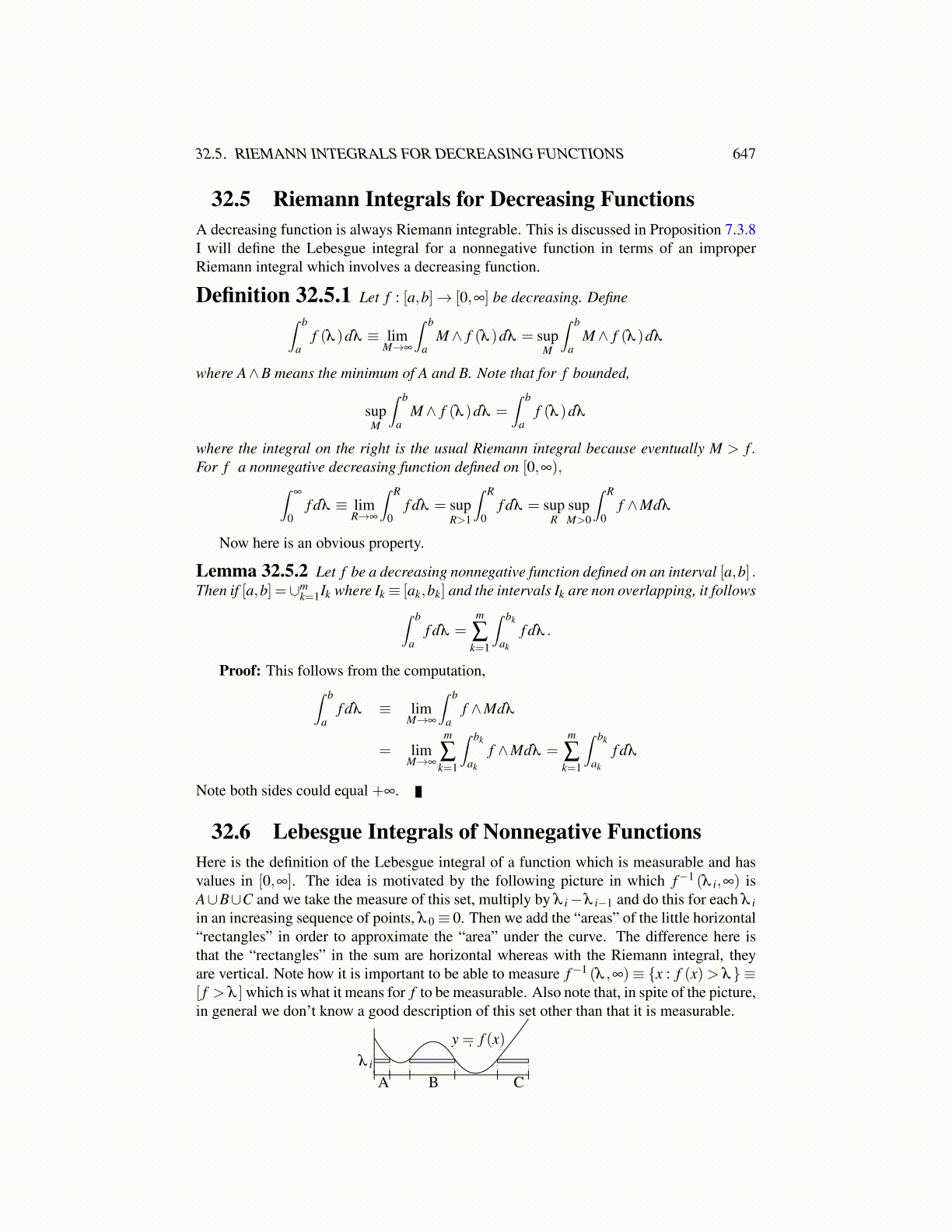
32.9. THE INTEGRAL’S RIGHTEOUS ALGEBRAIC DESIRES 647
The next theorem, known as Fatou’s lemma is another important theorem which justi-fies the use of the Lebesgue integral.
Theorem 32.8.2 (Fatou’s lemma) Let fn be a nonnegative measurable function. Letg(ω) = liminfn→∞ fn(ω). Then g is measurable and∫
gdµ ≤ lim infn→∞
∫fndµ.
In other words, ∫ (lim inf
n→∞fn
)dµ ≤ lim inf
n→∞
∫fndµ.
Proof: Let gn(ω) = inf{ fk(ω) : k ≥ n}. Then
g−1n ([a,∞]) = ∩∞
k=n f−1k ([a,∞]) ∈ F
Thus gn is measurable. Now the functions gn form an increasing sequence of nonnegativemeasurable functions. Thus g−1 ((a,∞)) = ∪∞
n=1g−1n ((a,∞)) ∈ F so g is measurable also.
By monotone convergence theorem,∫gdµ = lim
n→∞
∫gndµ ≤ lim inf
n→∞
∫fndµ.
The last inequality holding because∫gndµ ≤
∫fndµ.
(Note that it is not known whether limn→∞
∫fndµ exists.)
32.9 The Integral’s Righteous Algebraic DesiresThe monotone convergence theorem shows the integral wants to be linear. This is theessential content of the next theorem.
Theorem 32.9.1 Let f ,g be nonnegative measurable functions and let a,b be non-negative numbers. Then a f +bg is measurable and∫
(a f +bg)dµ = a∫
f dµ +b∫
gdµ. (32.13)
Proof: By Theorem 32.2.8 on Page 636 there exist increasing sequences of nonnegativesimple functions, sn → f and tn → g. Then a f +bg, being the pointwise limit of the simplefunctions asn+btn, is measurable. Now by the monotone convergence theorem and Lemma32.7.3, ∫
(a f +bg)dµ = limn→∞
∫asn +btndµ = lim
n→∞
(a∫
sndµ +b∫
tndµ
)= a
∫f dµ +b
∫gdµ.